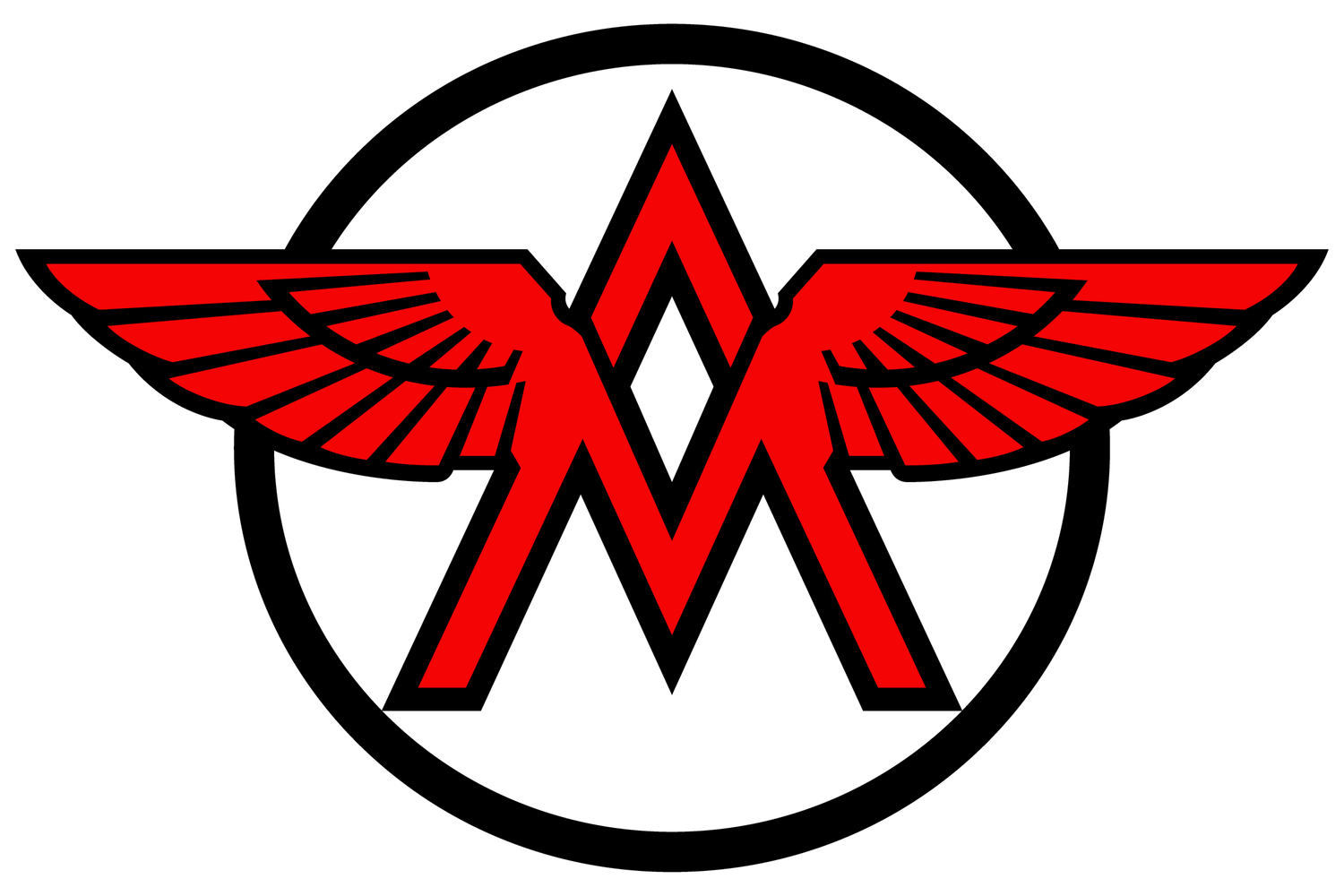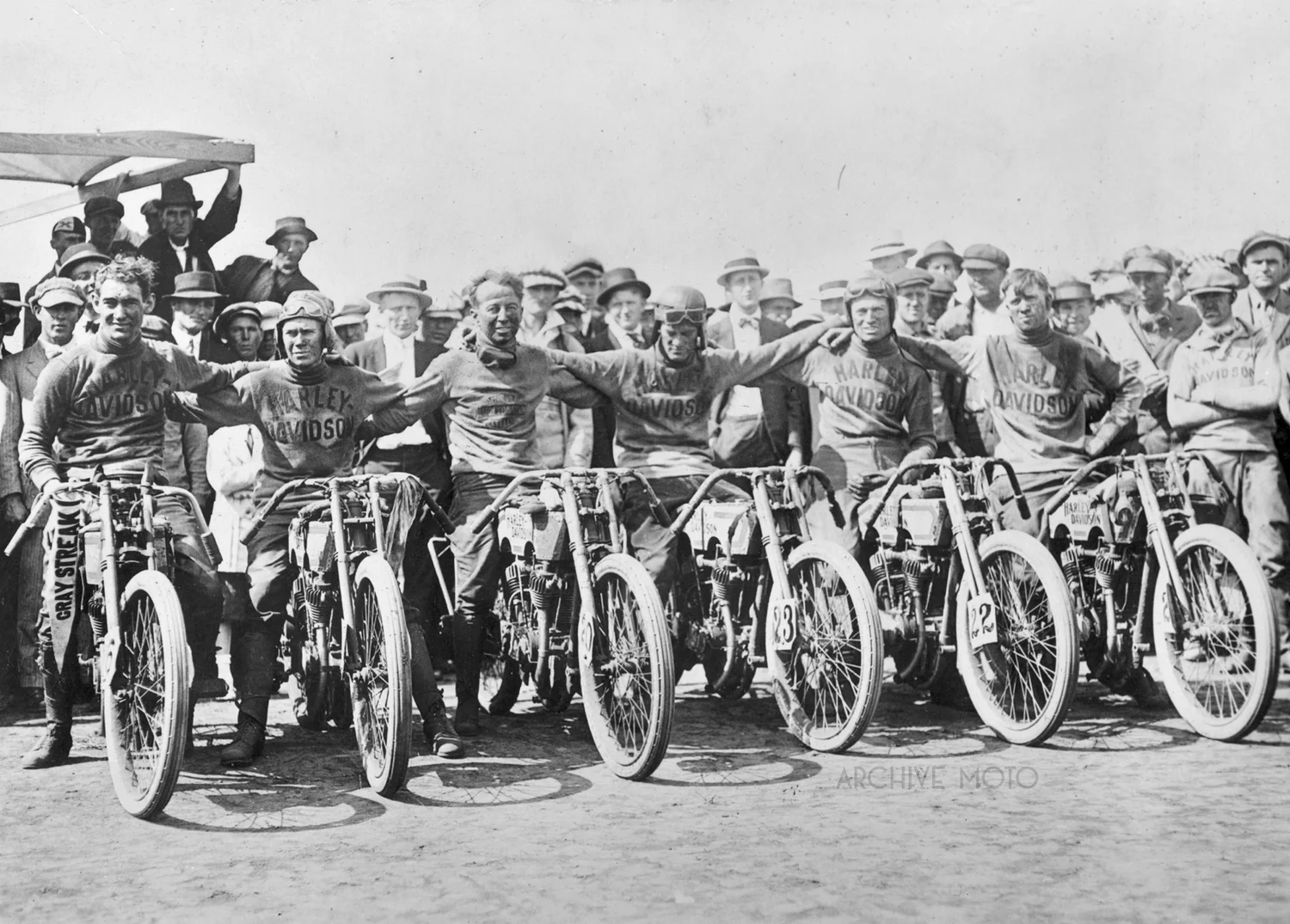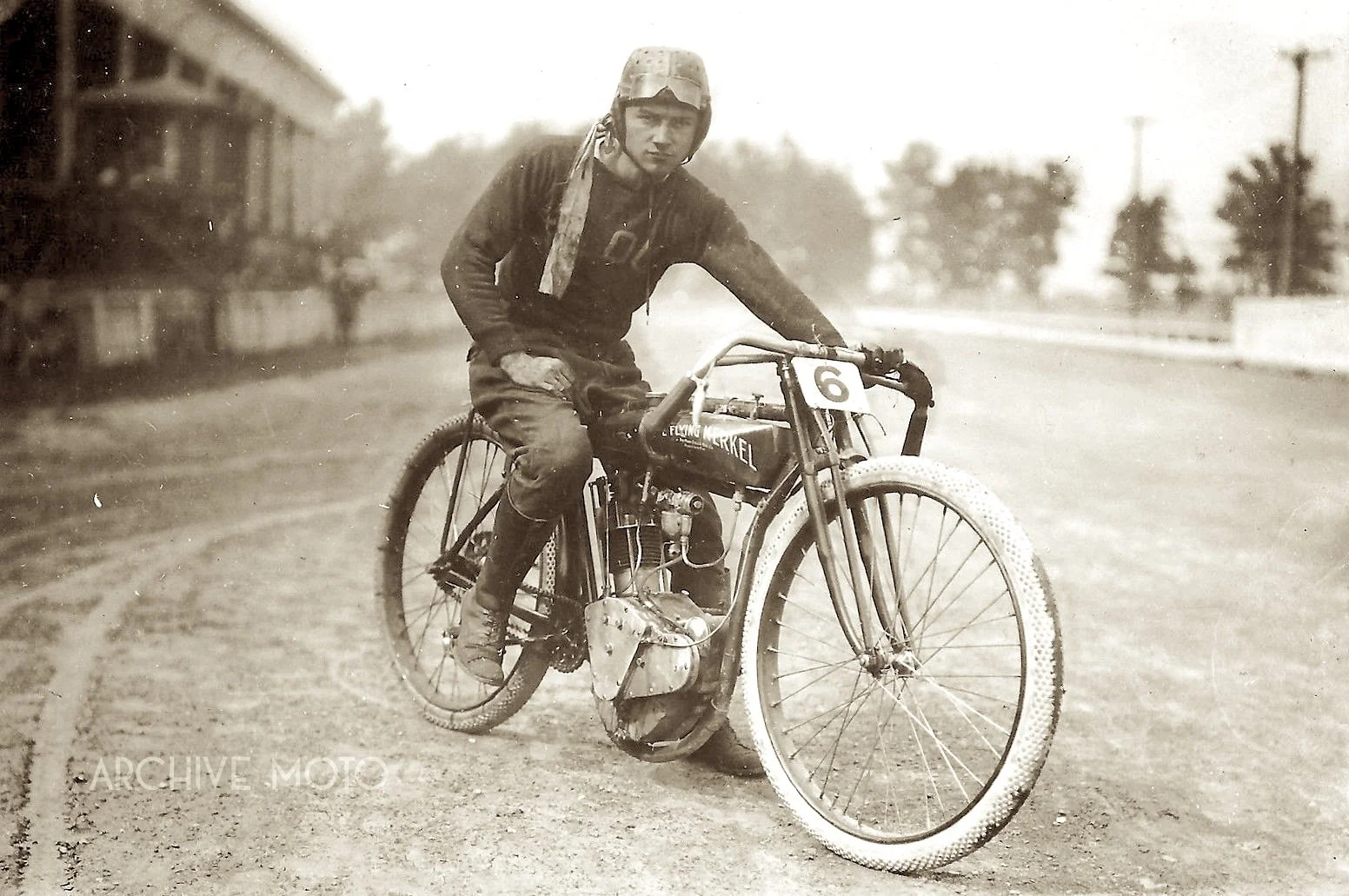Seen here is the Harley-Davidson Motor Company in 1906, featuring founders, staff, and customers alongside a handful of its earliest machines. The photo is listed as 1906; however, it may actually be 1907, as it was taken in front of the Chestnut Street factory, the first expansion beyond the Davidson family's shed. This is because Chestnut St. wasn't complete until December 1906, so if this was taken then it looks unseasonably balmy.
Former bicycle racer and American motorcycle pioneer Walter G. Collins onboard his 1908 Indian twin in San Francisco, July 12, 1908. “Mile A Minute” Collins, as he became known after being the first to top the 60 MPH mark at LA's Agriculture Park track onboard a cumbersome French Peugeot twin, was one of the founding fathers of American motorcycle racing. Hailing from LA, Collins had been among the best bicycle racers on the West Coast during the sport’s heyday before quickly transitioning to motorcycles once they first arrived.
Among my favorite pioneer motorcycle racers and images, Cleo Francis Pineau embodied all that made that first generation of racers a class of their own. Here he is photographed sitting astride his single-cylinder Flying Merkel racer during the June 1914 races in Toledo, Ohio. Like so many of America's early professional motorcycle racers, Cleo Francis Pineau was carved from the rugged wood of the frontier—equal parts grit, speed, and insatiable wanderlust. Born in Albuquerque, New Mexico, during the waning years of the 19th century, Pineau was slight in both stature and temperament, coming of age at a time when machines were beginning to reshape the modern world. He never took kindly to being boxed in by schoolhouse walls. Legend has it he left formal education behind in the sixth grade—drawn not by books but by speed, fuel, and the open road.
Otto Walker and Leslie Parkhurst, two of history’s most accomplished pioneer motorcycle racers and pillars of Harley-Davidson legendary factory team, the Wrecking Crew, bombing the slant at New York’s Sheepshead Bay Speedway in July, 1917. The two men were on the hunt for speed records, specifically the 500-mile, 1,000-mile, and 24-hour records for solo riders and sidecars as organized by George Wood, the Motor Co.’s distributor in the state. Otto Walker was on hand as he had been working as a foeman in Harley’s Manhattan branch following the leg injury that took him out of the game in 1916. Eager to get back in the saddle but still nursing his injury, Walker signed up to run the sidecar for the 24-hour record attempt, with Carl Lutgens acting as copilot in the hack.





